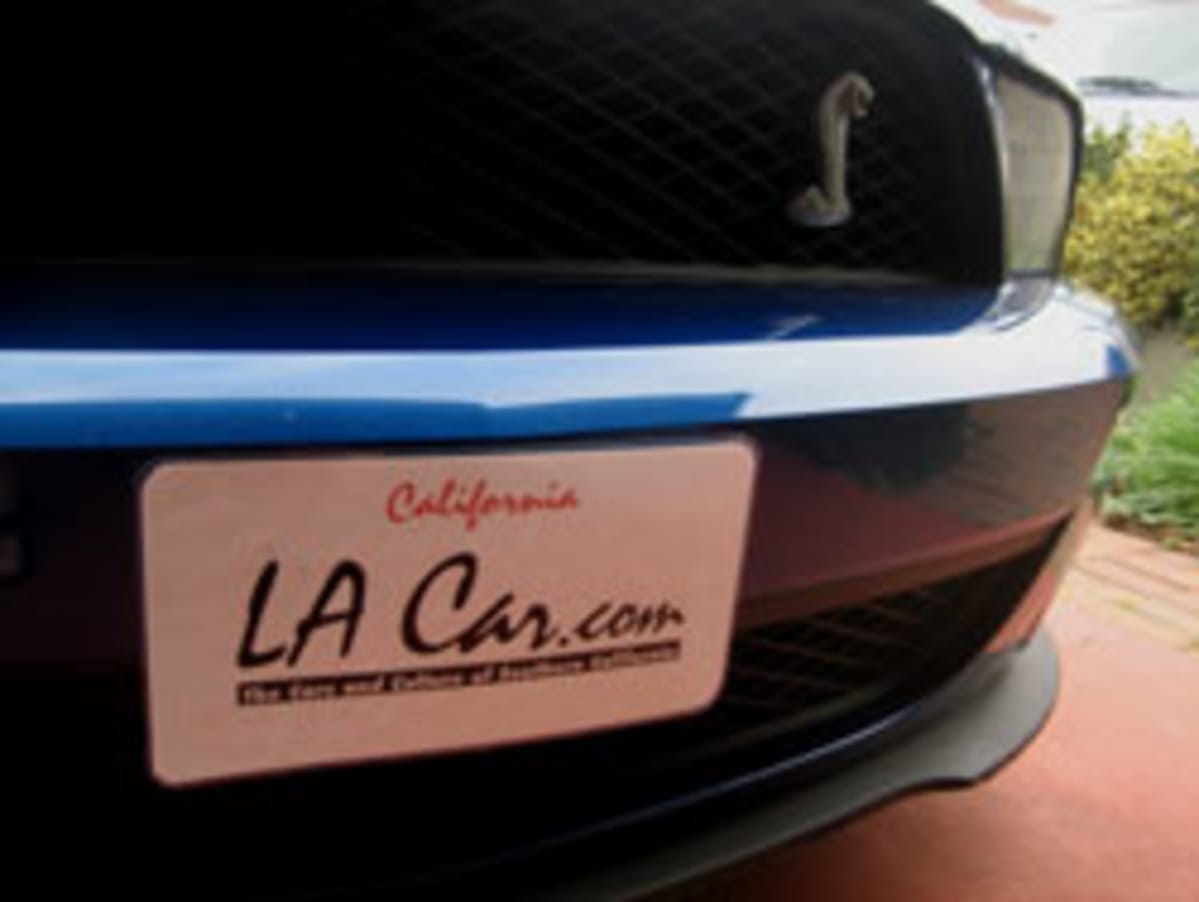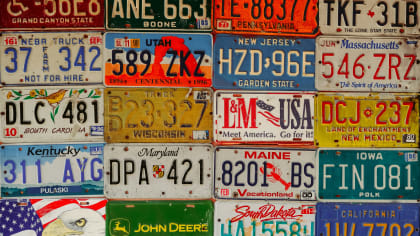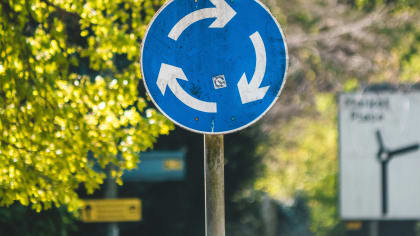BACK SEAT DRIVING - MARCH 2007
This article is from our archives and has not been updated and integrated with our "new" site yet... Even so, it's still awesome - so keep reading!
Published on Wed, Feb 28, 2007
By: The LACar Editorial Staff
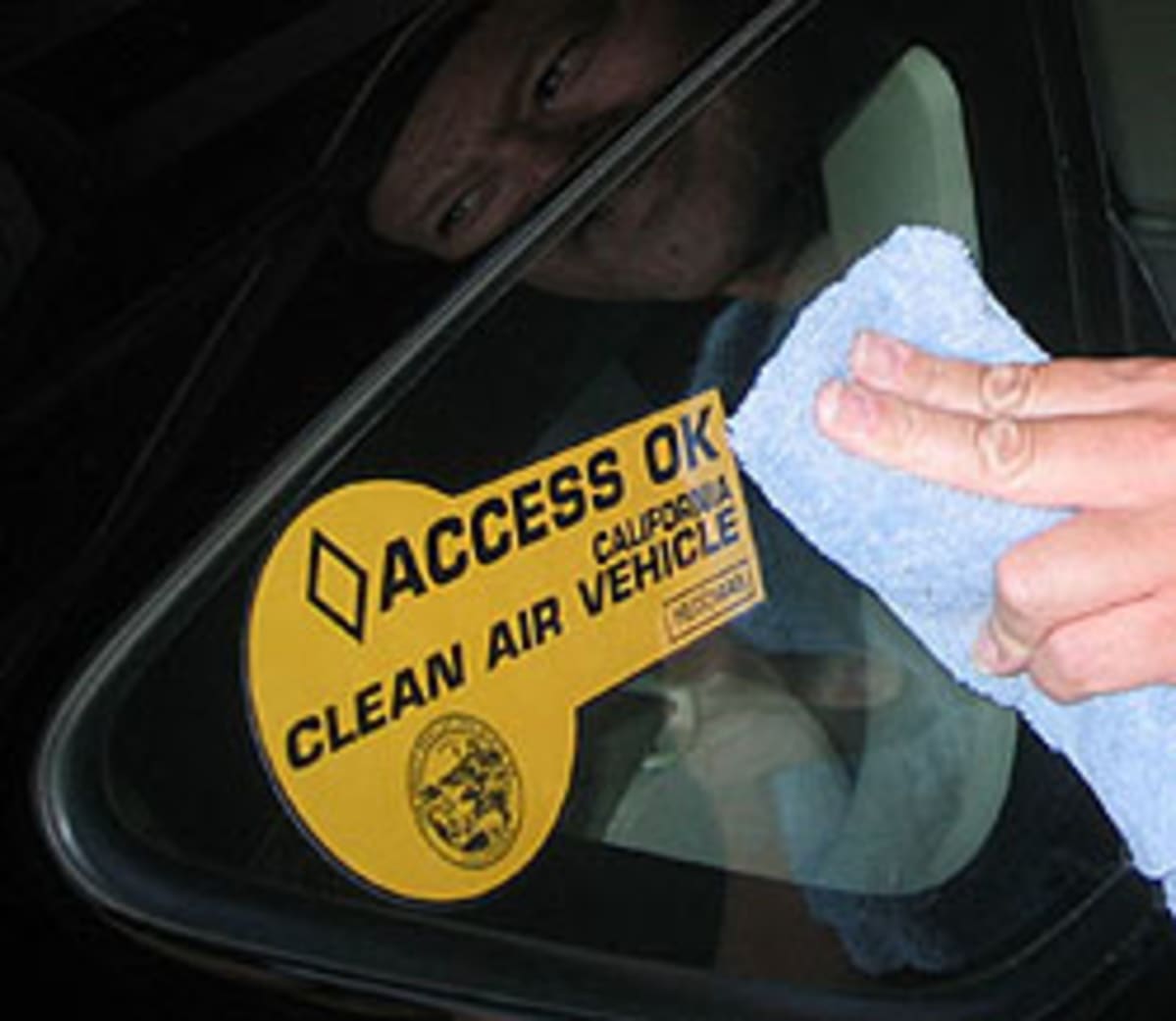
Well, it looks like the guy who tried to sell his carpool stickers for $10,000 on eBay wasn't that far off the mark (see March 10th Back Seat Driving, below). According to a USA Today report, Californians appear willing to pay $4,000 more for used gasoline-electric hybrid vehicles that have state-issued carpool stickers than for hybrids that don't. The data was obtained from a sampling of prices by Kelley Blue Book for USA Today. As many LA Car readers know, the "Access OK California Clean Air Vehicle" carpool stickers allow certain low-polluting hybrids (the Toyota Prius, Honda Civic Hybrid, and Honda Insight) to use the low-density, faster-moving carpool lanes - even if the driver is alone in the car. California ceased issuing stickers to hybrids last month after hitting the legislative ceiling of 85,000 stickers. The no-longer-available stickers are valid through January of 2011 and stay with the car when it's sold, benefiting subsequent owners. "Being able to use the carpool, or high-occupancy vehicle, lanes easily saves half an hour a day in congested Los Angeles or San Francisco, making the stickers valuable to time-pressed Californians," says Chris Woodyward of USA Today. "Now that no new permits are available for hybrids, asking prices average $4,000 more for used Priuses with stickers than without, the survey by car-price tracker Kelley shows.". "It appears people buying Prius vehicles had a different angle" than just saving fuel or polluting less," Kelley market valuation director.Eric Ibara informed USA Today, "Kelley sampled prices of 30 2004-06 Priuses offered at used car websites. That's sufficient to confirm the price difference," Ibara says. Evidently, not enough used Civic hybrids were for sale to include it in this survey. "If gasoline is $3 a gallon - it's been at least that much for about two weeks here - a used-Prius buyer could offset the carpool premium in 30,000 miles," Ibara calculates. "That values the owner's time at $20 a hour and assumes the sticker saves half an hour a day," reports Woodyard. Your Back Seat Driving comments can be sent to: Letter to the Editor
ROY NAKANO: BACK SEAT DRIVING
HOW CONSUMER REPORTS' CAR SEAT
TESTS WENT WRONG
March 21, 2007
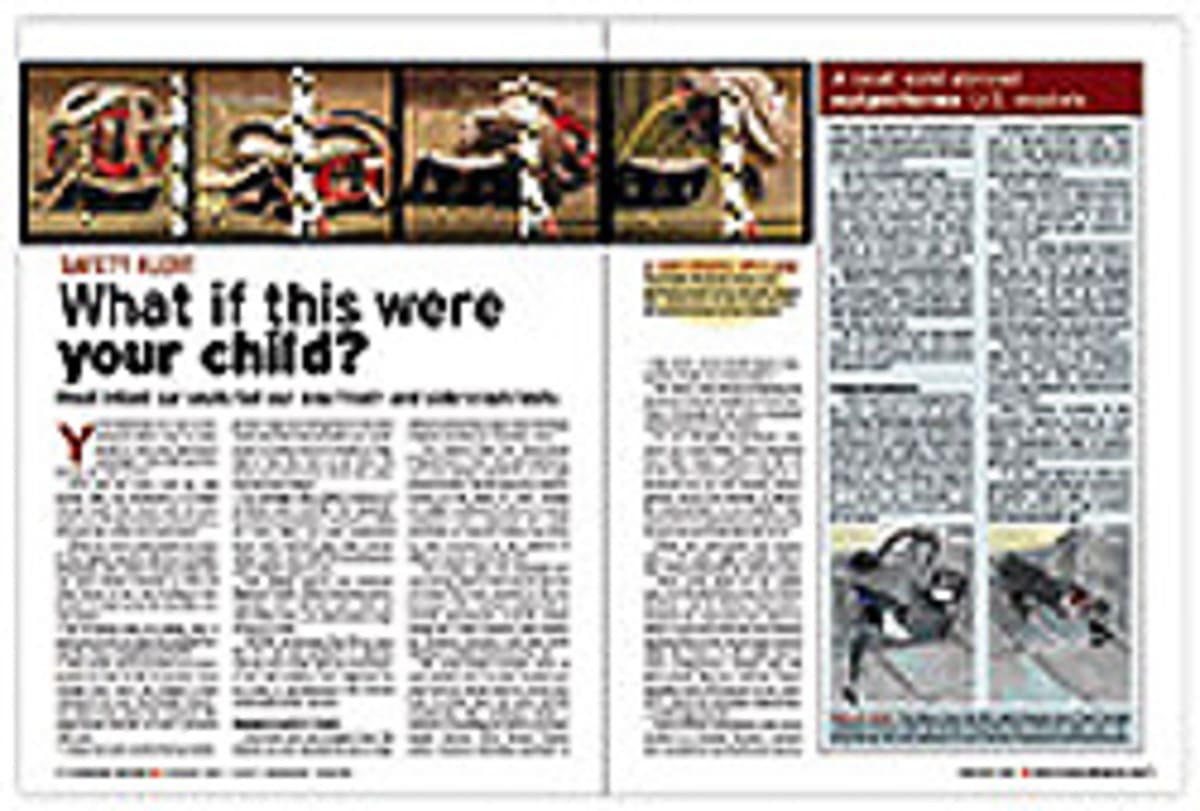
A series of misjudgments and a key misunderstanding between Consumer Reports and an outside laboratory led to the publication of erroneous crash-test data in its recent report on infant car seats, an expert investigation and interviews with those involved has revealed. The report, in the February 2007 issue of Consumer Reports, was made public on January 4th but was withdrawn - along with its test results - 14 days later when evidence first surfaced that it was flawed. The report attracted wide public attention because it said 10 of the 12 seats tested provided poor protection. CR urged recall of two models that got our lowest rating of Not Acceptable. The withdrawal, which also generated broad publicity, shook the confidence of the public and safety experts in a 71-year-old institution that had enjoyed a largely unblemished record of product testing. "Mistakes are rare at Consumers Union but this one went right to the heart of what we do," says Jim Guest, president of the nonprofit publisher of Consumer Reports. "We had to figure out exactly what went wrong." Soon after the withdrawal, Consumers Union asked two independent consultants to review the tests: Kennerly H. Digges, former director of Vehicle Safety Research at the National Highway Traffic Safety Administration (NHTSA), which regulates vehicles and child seats, and Brian O'Neill, former president of the Insurance Institute for Highway Safety (IIHS), which runs its own crash-test program. Digges and O'Neill were given access to documents and communications concerning the project, and interviewed technical staff from Consumer Reports, the outside laboratory where the tests were run, and NHTSA. Their review concludes that Consumer Reports stumbled into methodological errors with misleading results. The project's rationale was simple. NHTSA requires car seats sold in the U.S. to pass a 30-mph front-impact crash test, the same standard to which all new passenger vehicles are held. But many vehicles are also tested in tougher 35-mph front- and 38-mph side-impact crashes as part of the agency's New Car Assessment Program (NCAP) to measure their crashworthiness. Child seats are not required to pass the more rigorous tests, and CR wanted to know how they would behave under NCAP-like conditions. The series of misjudgments, Digges and O'Neill said, stemmed mainly from CR's decision to develop and run the side-impact tests without extensive consultation with other experts. That decision was a mistake, they said. No federal standard exists for simulating 38-mph side impacts, they noted, and "as such, there were large opportunities for tests to go wrong." CR's practice differs from that of some other test organizations, which discuss protocols with manufacturers and others before, during, and after testing. "This openness does not have to mean that the manufacturers can subvert or weaken programs," Digges and O'Neill said, "but it does provide opportunity for important changes to programs to occur and greatly reduces the chances that there will be major criticisms when results are released." The key misunderstanding concerned the proper speed for the test. In written and oral instructions, CR engineers asked that the side-impact tests be run at 38 mph to mimic the NCAP protocol. Under NCAP, that number refers to the speed of the striking vehicle - a car-sized moving barrier that smashes into a stationary vehicle being tested. But once the two collide, they move off more or less as a unit. The resulting velocity of the struck vehicle, and hence of the crash dummies inside, is only about half that of the striking vehicle, since the striking vehicle's momentum is shared between the two. The contractor, on the other hand, assumed the 38-mph figure referred to the post-impact speed of the struck vehicle and set up the test accordingly. "This fundamental misunderstanding goes back to the early communications between CU and the contractor," Digges and O'Neill said. The result? All the side-impact tests took place under conditions that could occur only if the striking vehicle were traveling at 70 mph or more - close to twice the speed of 38 mph. That rendered the results nearly meaningless. Relatively few side-impact crashes occur at such speeds, experts say, and in those that do, the greatest risk of injury is from "intrusion," the tendency of the striking vehicle to crush the other car's passenger compartment, which sled tests generally do not simulate. "Our engineers did not have deep knowledge of side-impact sled simulations and relied largely on the expertise of the lab, which has many years of experience in this field," says Guest. But the contract did not specifically call for the lab to consult on test development, Digges and O'Neill said, adding that the lab "viewed its role as little more than a sled operator. The contractor was willing to run whatever tests were requested." CR has withdrawn its 35-mph front-impact results, although neither the consultants nor others identified specific flaws like those of the side-impact tests. "Given the lack of a widely accepted test protocol, we think it's better to hold off for now," Guest explained. "To shut manufacturers out of the process was shortsighted," says Robert Waller Jr., president of the Juvenile Products Manufacturers Association, a trade association, since consultations could have turned up the flaws. "We are willing to work with CR in addressing this issue. We have the same goal##wanting to develop safer products." Your Back Seat Driving comments can be sent to: Letter to the Editor
ROY NAKANO: BACK SEAT DRIVING
March 18, 2007
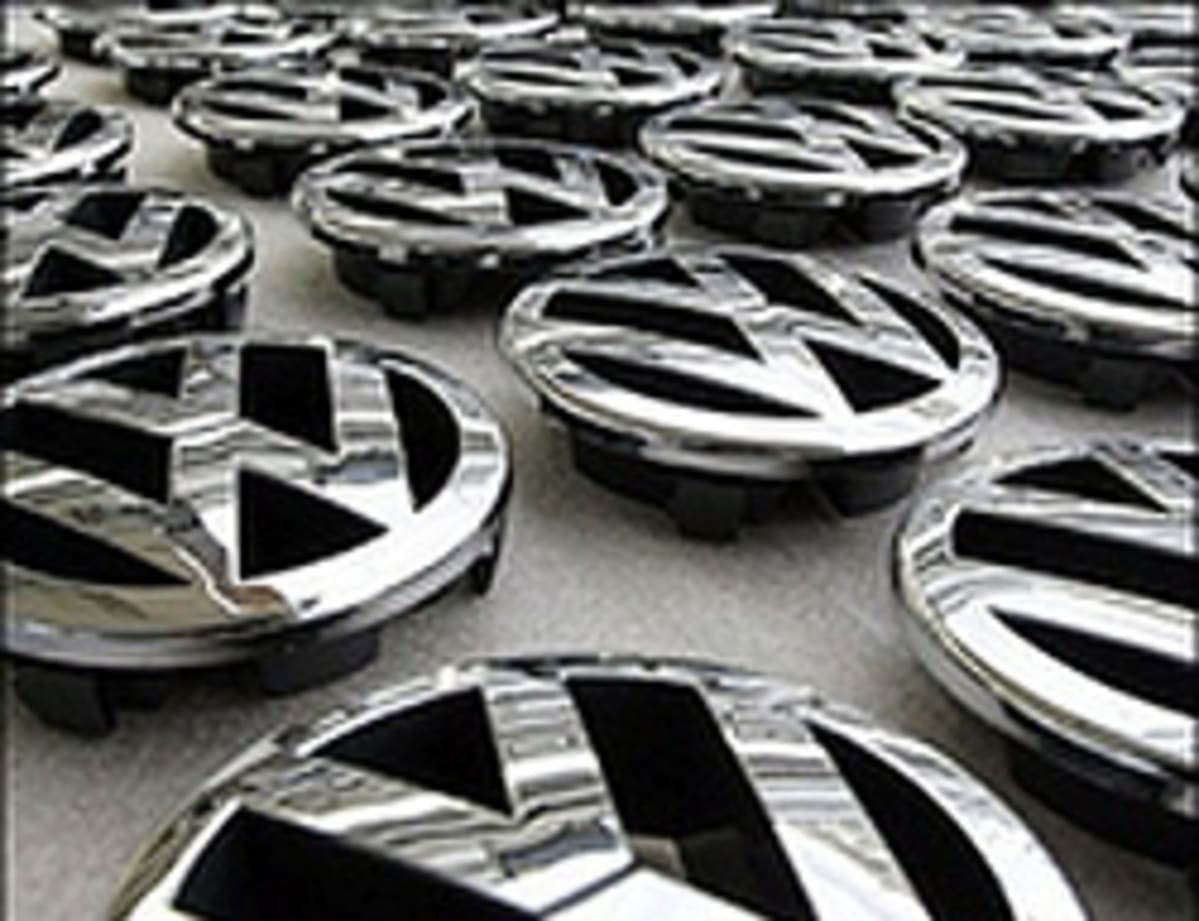
For its annual automotive issue for April, Consumer Reports published its usual articles on reliability and safety. As expected, Toyota and Honda topped the reliability charts. The Prius provides the most miles per gallon. And of the top picks in 10 categories for 2007, all 10 are Japanese cars: Honda Accord (family sedan), Honda Civic (small sedan), Honda Fit (budget car), Infiniti G35 (upscale sedan), Infiniti M35 (luxury sedan), Mazda MX-5 Miata (fun-to-drive), Toyota Highlander Hybrid (midsize SUV), Toyota Prius (green car), and Toyota RAV4 (small SUV). On the other hand, one American car makes the "Most Impressive" list (Ford Fusion/Mercury Milan), while a Toyota makes the "Most Disappointing" list (Toyota Yaris). In the "Which Car Would You Buy Again?" category, the Toyota Prius ranks as the most satisfying vehicle for the fourth straight year. Second place again goes to the Chevrolet Corvette. The Chevrolet Uplander minivan was the lowest-ranked model in this category. One of the most interesting articles in the issue is "Which Companies Make the Best Cars?" Here, reliability is not factored into the equation. Instead, factors such as quality, performance, comfort, and safety features were tabulated to see which car company made the best cars overall. The result? Volkswagen/Audi makes the best cars, according to Consumer Reports. Holding the Number Two spot is Honda/Acura, while BMW/Mini ranks third and Mercedes-Benz forth. "To shed light on why some automakers are thriving while others are spinning their wheels, Consumer Reports dug deep into its own data to show the highs and lows for major carmakers, state the editors. "We analyzed how vehicles performed in a battery of CR's road tests, coupled with reliability histories based on more than 1.3 million vehicles representing 250 models. We huddled with CR's team of expert auto engineers and interviewed business analysts who follow the industry closely." Here's what CR found:
- "No carmaker does everything right. Volkswagen builds vehicles that perform very well in our testing but vary in reliability. Despite very good reliability, not all Toyota models score well."
- "Just because a car is Japanese doesn't mean it's a great car. Honda, Toyota, and Subaru make consistently reliable cars, but other Japanese automakers have mixed results."
- "U.S. automakers build some good models. But many vehicles are mediocre, and even the best seldom rise to the top of their categories against still competition."
- "Some automakers' vehicles consistently do well in important areas such as handling, braking, or fuel ecnomy, which weigh heavily on our Ratings."
The editors are quick to point out that the companies that make the best cars are not necessarily the same ones that make the most reliable ones. Indeed, the Mercedes line, which scored near the top in the "best cars" ratings, ranked at the bottom of the reliability ratings. Conversely, Toyota/Lexus/Scion, while very reliable overall, finished in the middle of the field. All of the Detroit-based companies finished in the bottom half. My take on the story: It's not all about reliability. In reality, all of the car companies make vehicles that are significantly more reliable than the cars of the past. If you choose your car solely on the basis on reliability ratings, you may be missing out on a better car. Your Back Seat Driving comments can be sent to: Letter to the Editor
ROY NAKANO: BACK SEAT DRIVING GHOSN HANDS OFF U.S. OPERATIONS OF NISSAN March 16, 2007 Carlos Ghosn has relinquished direct control of Nissan's Americas operations to Hiroto Saikawa, executive vice president and a purchasing expert, reports Erik Schlzig of the Assocated Press. "Few thought at the time that would mean Ghosn himself would hand over a piece of his empire, which includes Nissan and its alliance partner Renault SA of France, to an underling. Nissan Motor Corporation said the move doesn't mean Ghosn was spread too thinly, but it's likely to give him more time to focus on the company's problems in Japan - where a domestic sales slump led the company to announce Friday it will cut auto production at two factories." Ghosn remains CEO of both Nissan and French automaker Renault SA, which sent in Ghosn to turn the fortunes of Nissan around back in 1999. Ghosn cut costs by closing plants, reducing jobs and selling off assets. Ghosn also oversaw Nissan North America's move from California to Nashville last year, a series of management changes and the launch of several new models. "Less than half of Nissan's professional, management and executive level employees decided to relocate from Southern California when the headquarters was moved to Tennessee last summer," reports Schlzig. Nissan North America's operations include automotive styling, engineering, consumer and corporate financing, sales and marketing, distribution and manufacturing. Your Back Seat Driving comments can be sent to: Letter to the Editor
ROY NAKANO: BACK SEAT DRIVING
CARPOOL STICKERS FOR SALE, ONLY
$10,000
March 10, 2007
ROY NAKANO: BACK SEAT DRIVING
March 4, 2007
In
1982, Vincent Chin, a Chinese American groom-to-be became a victim of anti-Japanese
auto industry sentiment when two laid-off autoworkers in Detroit took a baseball
bat to his head after mistakenly identifying him as being Japanese. Around that same time, we
saw media coverage of some autoworkers in Michigan venting their frustrations
against the Japanese auto industry by taking a sledge hammer to a Toyota.
As Toyota approaches the prospect of becoming the number one automotive
manufacturer, they are being careful not to repeat that sentiment. The company
is also being careful not to gloat over its success. One family member of the Toyota
family has even stated that being number one is not important.
To Toyota's dismay, its foray into NASCAR seems to have triggered a new wave of
anti-Japanese and specifically anti-Toyota sentiment. "Just think about how our
troops will be demoralized if something Japanese makes a good showing. It would
be like finding 'Honda' in huge neon lights on the Washington monument or
finding sushi on the menu at Denny's, writes Capt. Fogg on his Human Voices
blog.
"References to Pearl Harbor intermingled with 'Jap' are scattered throughout
several anti-Toyota blogs and Websites, reports Caroline Aoyagi-Stom of the
Pacific Citizen: "I mean first, Pearl Harbor, then baseball, and now this!
...they don't belong in NASCAR"; "I ain't gonna sit back and see them Japs
taking this place over, they bombed us let's bomb them."
One General Motors employee has posted a Website to serve as a forum for
anti-Toyota NASCAR fans: Fans Against Racing Toyotas, or F.A.R.T. Founder
Bill Bagwell asserts, however, that he is falsely accused of being racist. "I'm
not against the Japanese or Asian people. It's about the deep pockets of Toyota
and the loyalty of people," says Bagwell.
The Pacific Citizen's Storm says, "Much of the arguments behind the anti-Toyota
movement stems from the concept of foreigners being unwelcome... Yet, when Dodge
recently made its way back to NASCAR after a 16 year absence, the company was
welcomed with open arms, even though Dodge is owned by DaimlerChrysler, a German
car company.
Certainly, not all NASCAR fans share this sentiment. Even Bagwell has posted
opposing viewpoints on his blog. Most recently, Fans Against Racing Toyotas
has posted the comments of USMC Rob Knoll, who states:
"A Miami Herald article said that Toyota was underhanded because it lured
drivers from other teams. What do you expect them to do? Companies have been
doing that for ages. ...The Camry is the only NASCAR Cup car built in the United
States. The Ford Fusion is built in Mexico, and the Dodge Charger and Chevrolet
Monte Carlo are built in Canada." I think Toyota is doing a little more for the
country and sport than you've given them credited for."
"In short, the world is now a global market place. With ever shrinking
paychecks, people are trying to get the most for their dollar. I know I am,"
says Knoll. "I am
a proud American who has deployed to Iraq twice for our country so I think my
support speaks for itself. I worked at Ground Zero two days after the attack and
banded together with other Americans as we all mourned the tragedy. That is the
true fabric of America, not what brand of car we drive. When it comes to
expanding the sport I love, and it involves the inclusion of a company that
supports Americans like Toyota, I'm all for it."
Your Back Seat Driving comments can be sent to:
Letter to the Editor
ROY NAKANO: BACK SEAT DRIVING
STRATOCASTER SHELBY GT
March 1, 2007
A
JOURNAL OF LOS ANGELES & ITS CAR CULTURE That
was LA Car's subtitle when it started back in 1997. Since then, La Car
became LA Car. Its subtitle became
Reporting From Car Culture Ground Zero, then From The Heart of Car
Culture, to today's The Cars and Culture of Southern California. At
all times, however, we aimed to chronicle the Southland's spirit - much like
one's own
journal or diary.
Now, the diary section goes daily. LA Car has always been a great source
to come back to from week-to-week, to see what articles and reviews have been
added to our rather staggering database. With Back Seat Driving, a.k.a.
BSD (note the similarity to two well-worn abbreviations, BS and BFD) and Live
Wires - Hot & Tender News From the Car Culture (co-located with Back Seat
Driving, and updated at least daily), we give you a reason to
come back more often (all opinions, by the way, are those of the respective
author).
So, go
ahead and bookmark www.lacar.com. We'll be
sure to always provide a link to Live Wires and the latest Back Seat
Driving blog entry. In the meantime, welcome to the journal and journey into
the cars and culture of Southern California. - Roy Nakano For
past Blog entries, click the following:
February 2007
January 2007
December 2006
November 2006
October 2006
September 2006
August 2006
July 2006
June 2006
May 2006
April 2006
March 2006
February 2006
January 2006
December 2005
November 2005
October 2005
September 2005
August 2005
July 2005
June 2005
May 2005
April 2005
March 2005
February 2005
January 2005
December 2004
November 2004
October 2004
September 2004
August 2004
July 2004
June 2004
May 2004
April 2004
 Did
you ever wonder how much those $8 single-occupant carpool lane stickers added to
the value of your Toyota Prius or Honda Civic Hybrid? The allotment of 85,000
California HOV-lane hybrid stickers have been exhausted, but stickered cars will
be able to continue to use the carpool lanes without a carpool until January 1,
2011. Consequently, if you haven't gotten your sticker by now, you are out of
luck.
Or maybe not.
One enterprising eBay seller posted a set for sale. The price? $10,000. The
six-day online auction started at $10,000. Unfortunately for the seller, not a
single bid was received. It may have been due to the following caveat, which was
posted on the eBay site:
"If you buy them, you can't use them." That's because California law prevents
the stickers from being transferred. "DMV registers them to the car, not the
driver," reported Leslie Griffy, who broke the story for the Mercury News.
"According to the posting, the seller decided to sell the sticker set ## they
come in packs of four ## because she received two sets and has one hybrid car."
The seller later turned up in PriusChat.com, identifying herself
(hor
the record, I am not a 'quick scam artist,' and I would have sent the stickers
to the highest bidder. This was all real. In case you are wondering, I received
a FedEx from the DMV dated four days after the auction started. It provided a
return envelope, and requested that I send the extra stickers back ## which I
did so immediately. I called the DMV, and asked how they found out they had
errantly sent me a dup, and she replied, 'We entered in your VIN and our records
showed you had been issued two sets of stickers.' I then said, 'it was the eBay
auction, wasn't it?' And she quickly answered, 'Yes.'"
Okay, so the stickers won't add $10,000 to the value of your hybrid. On the
other hand, it's probably worth more than the $8 people paid to the Department
of Motor Vehicles. If you already have the sticker on your car, consider
yourself fortunate.
Says Skiesofblue1, "It was all a very fun experience, and a fun event. Lot's of
Internet discussion about the whole thing. Good learning experience. Anyways,
since this is my first post [to PriusChat], just thought I'd say something about
my car. It is a 2006 Prius, and it is Automotive Perfection. Well, any other
questions for me, just post."
Your Back Seat Driving comments can be sent to:
Letter to the Editor
Did
you ever wonder how much those $8 single-occupant carpool lane stickers added to
the value of your Toyota Prius or Honda Civic Hybrid? The allotment of 85,000
California HOV-lane hybrid stickers have been exhausted, but stickered cars will
be able to continue to use the carpool lanes without a carpool until January 1,
2011. Consequently, if you haven't gotten your sticker by now, you are out of
luck.
Or maybe not.
One enterprising eBay seller posted a set for sale. The price? $10,000. The
six-day online auction started at $10,000. Unfortunately for the seller, not a
single bid was received. It may have been due to the following caveat, which was
posted on the eBay site:
"If you buy them, you can't use them." That's because California law prevents
the stickers from being transferred. "DMV registers them to the car, not the
driver," reported Leslie Griffy, who broke the story for the Mercury News.
"According to the posting, the seller decided to sell the sticker set ## they
come in packs of four ## because she received two sets and has one hybrid car."
The seller later turned up in PriusChat.com, identifying herself
(hor
the record, I am not a 'quick scam artist,' and I would have sent the stickers
to the highest bidder. This was all real. In case you are wondering, I received
a FedEx from the DMV dated four days after the auction started. It provided a
return envelope, and requested that I send the extra stickers back ## which I
did so immediately. I called the DMV, and asked how they found out they had
errantly sent me a dup, and she replied, 'We entered in your VIN and our records
showed you had been issued two sets of stickers.' I then said, 'it was the eBay
auction, wasn't it?' And she quickly answered, 'Yes.'"
Okay, so the stickers won't add $10,000 to the value of your hybrid. On the
other hand, it's probably worth more than the $8 people paid to the Department
of Motor Vehicles. If you already have the sticker on your car, consider
yourself fortunate.
Says Skiesofblue1, "It was all a very fun experience, and a fun event. Lot's of
Internet discussion about the whole thing. Good learning experience. Anyways,
since this is my first post [to PriusChat], just thought I'd say something about
my car. It is a 2006 Prius, and it is Automotive Perfection. Well, any other
questions for me, just post."
Your Back Seat Driving comments can be sent to:
Letter to the Editor

